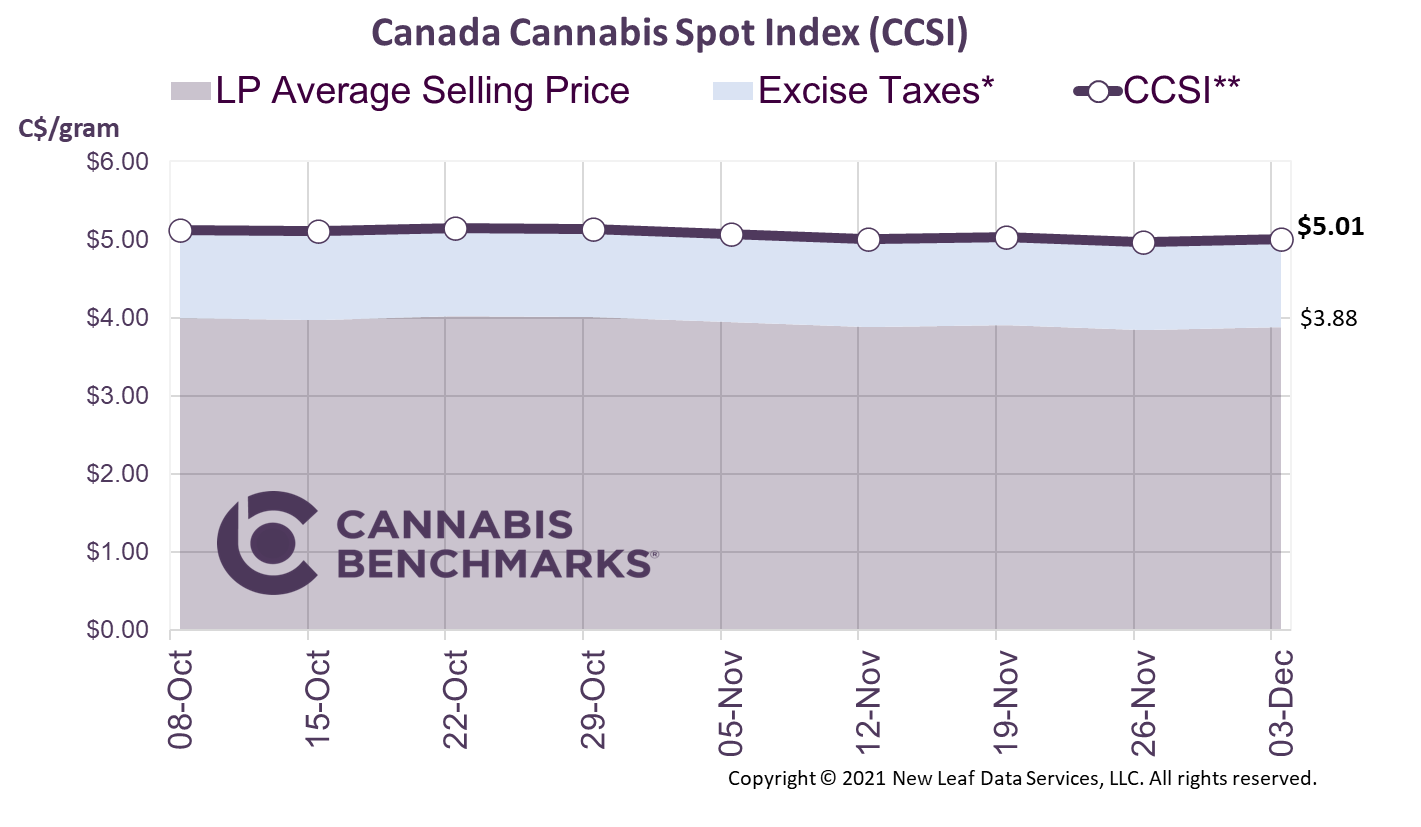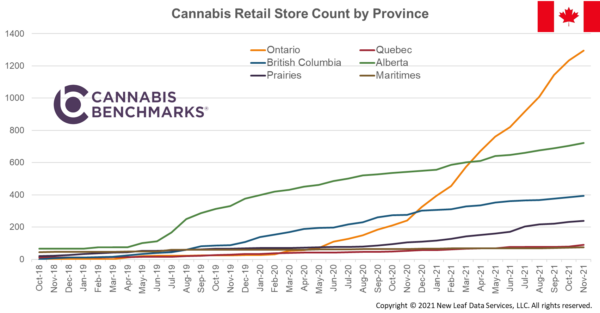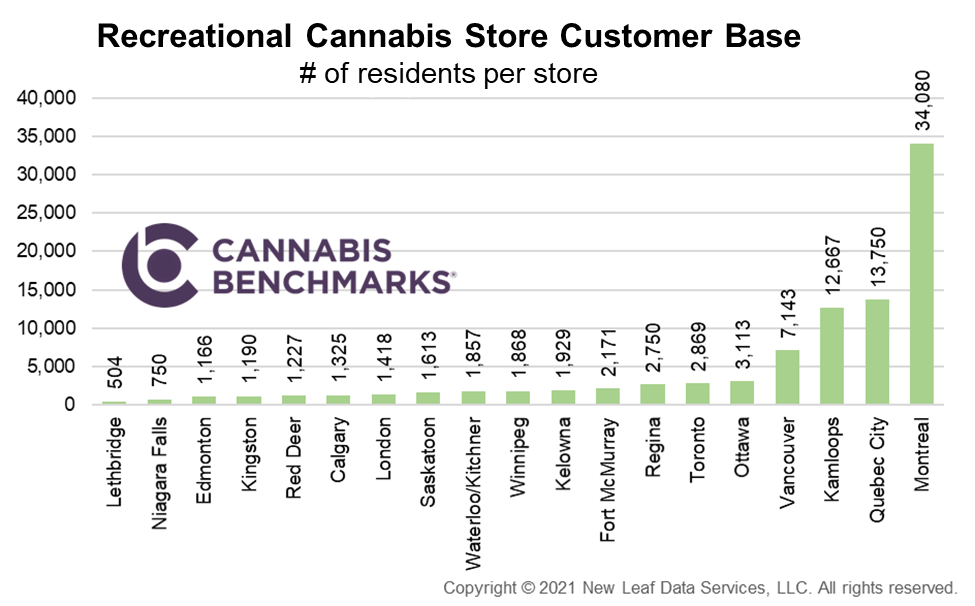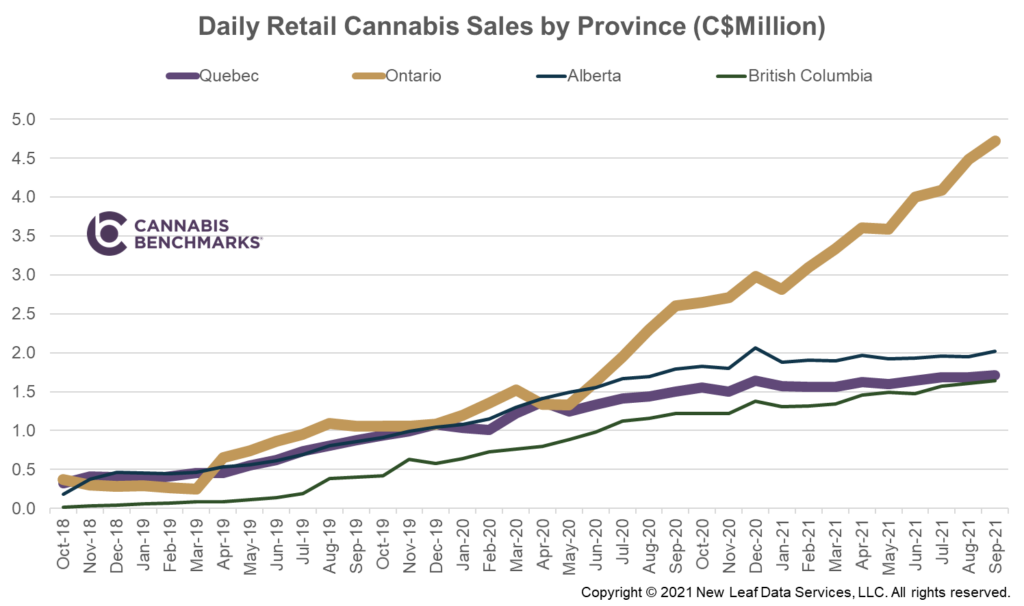

*The provincial excise taxes vary. Cannabis Benchmarks estimates the population weighted average excise tax for Canada.
**CCSI is inclusive of the estimated Federal & Provincial cannabis excise taxes..
The CCSI was assessed at C$5.01 per gram this week, up 0.9% from last week’s C$4.97 per gram. This week’s price equates to US$1,780 per pound at the current exchange rate.
Include your weekly wholesale transactions in our price assessment by joining our Price Contributor Network
If you have not already done so, we invite you to join our Price Contributor Network, where market participants anonymously submit wholesale transactions to be included in our weekly price assessments. It takes two minutes to join and two minutes to submit each week, and comes with loads of extra data and market intelligence.
This week we provide an update on the increase in retail storefronts across Canada. As of November 30 we counted 2,810 licensed retailers, with an average monthly growth rate of 127 stores or 7% in 2021. Ontario took the lead last year, as the store licensing process eased and more applications were quickly approved. Since then, Ontario’s cannabis retail footprint exploded and the expansion has not slowed. All other provinces, meanwhile, are still seeing steady growth but are also approaching a point of saturation. That being said, Ontario still has a lot further to go to reach the store concentration levels found in Alberta.

To get a better idea of how saturated the store counts are by city, we aggregated the store counts of each metropolitan area and looked to determine how many customers each store potentially serves. We should keep in mind that roughly 78% of the population is of legal age, and only 20-25% of that population uses cannabis. To simplify the analysis, we are only looking at the number of stores in a city and dividing that number by the full population (i.e., we are not making any adjustments for the number of cannabis users).

As shown in the chart above, cities in Alberta (Calgary, Edmonton, Red Deer, and Lethbridge) have the highest number of stores per capita – even more so than the big college towns in Ontario (Kingston, Waterloo/Kitchener, and London). With Alberta home to 721 stores, the competition is already quite fierce and there is a good likelihood that some stores will fail. Major cities in British Columbia (Vancouver, Kamloops, and Kelowna) are big laggers, with many illegal stores still operating in densely-populated parts of the cities due to strong demand.
Quebec is in the worst shape with a relatively small number of stores, all provincially-owned. The small retail footprint of the legal market is leading to depressed sales in the province. If there was a change in the retail model, we would certainly see a jump in legal sales similar to the change we saw in Ontario after the rapid roll-out of stores that began in April 2020. At the moment, daily sales are hovering at around the same level as Alberta, a province with nearly half the population of Quebec.


